These posts are not for foraging. They are intended for entertainment and intellectual satisfaction only. These posts are not a field guide nor comprehensive in any way - their accuracy is not assured in any way. Do not eat wild mushrooms unless you are a professional, have substantial professional assistance or have a wealth of personal experience with a specific species. Do not make any foraging decisions based on these posts. To do so could be dangerous or life threatening.
These Posts Contains No Information Regarding Edibility Or Toxicity
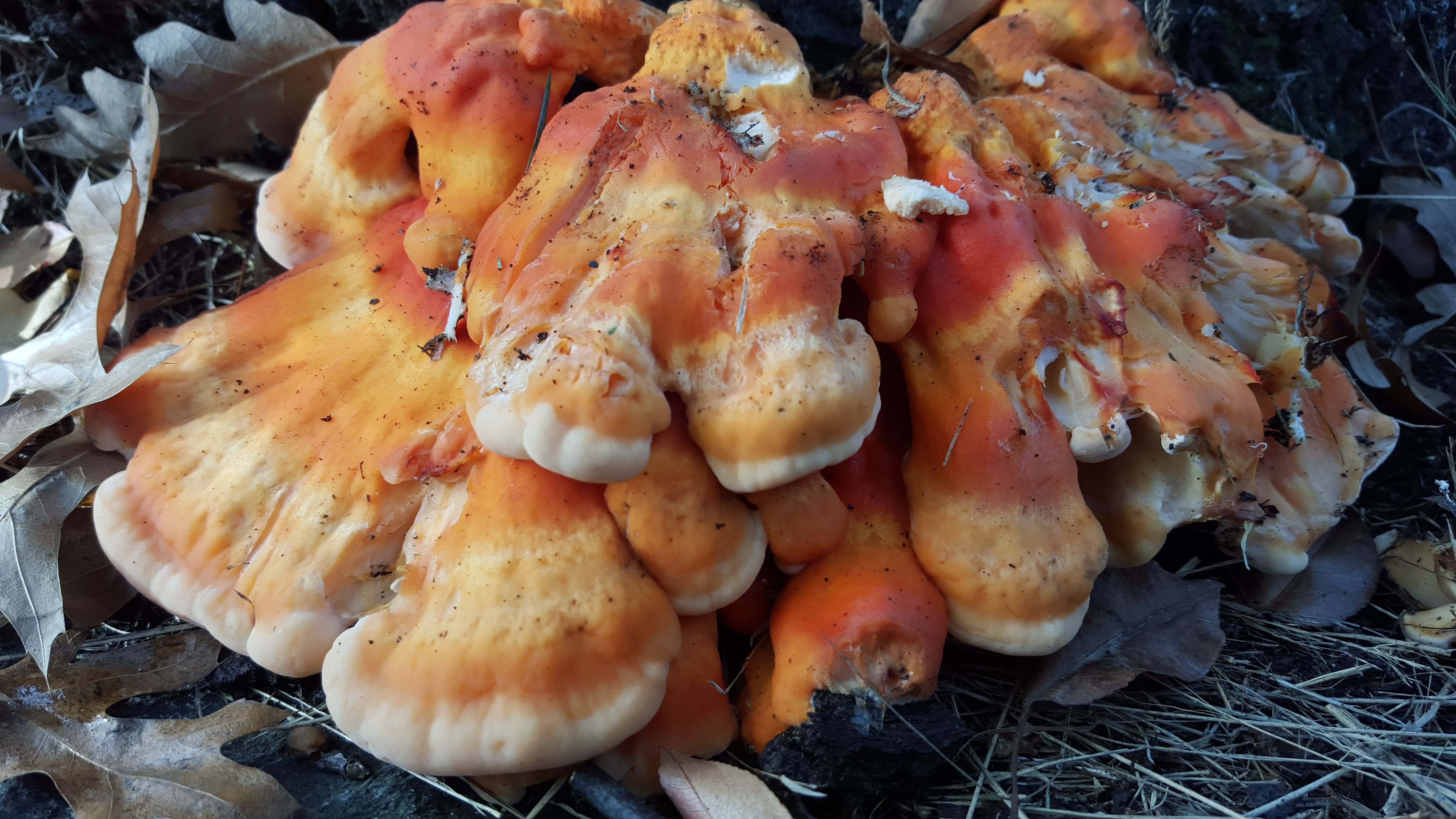
Those of you paying attention - really close attention - might think I've gone and started to repeat myself.
For the less die hard fans, let me bring the issue to the forefront. Awhile back, all the way in Amateur Mycologist #8, I did a species post about Leatiporus sulphureus. Then, months later, I was lucky enough to find the most perfect specimen of the species.
Now, here I am doing a full species post on the same damn mushroom? What gives?
What gives is that L.sulphureus and L.cincinnatus may look similar, but in truth, they are quite different.
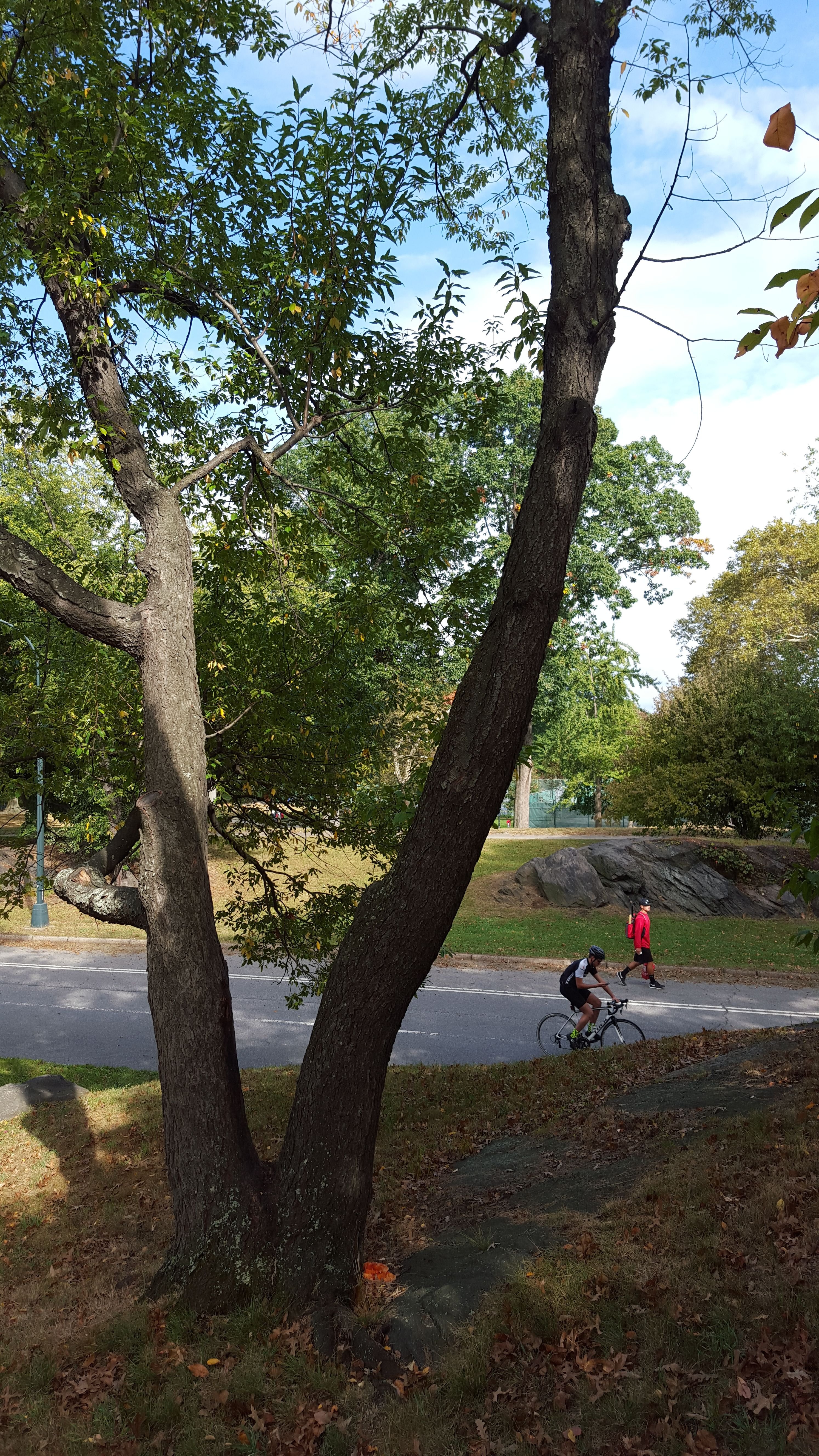
Take a look at that old tree
Growing for decades in Central Park, in the heart of New York City, it is now infected with a death sentence.
By most outward signs that tree looks healthy enough. But down there at the bottom of the tree is a little dot of orange - the fruiting body of L.cincinnatus. Although it is foreboding to any tree owner, the fruiting body is a fairly benign symptom of the larger disease that is ravaging the inside of the tree.
All Laetiporus species live on wood and are either saprobic or parasitic. If they grow on an already dead piece of wood, that would be saprobic. But when the mushroom takes hold of a living tree, it is acting parasitically. At this point we can compare L.cincinnatus and L.sulphureus to see their primary difference.
Take another look at the tree above, and then compare it to the tree right below.
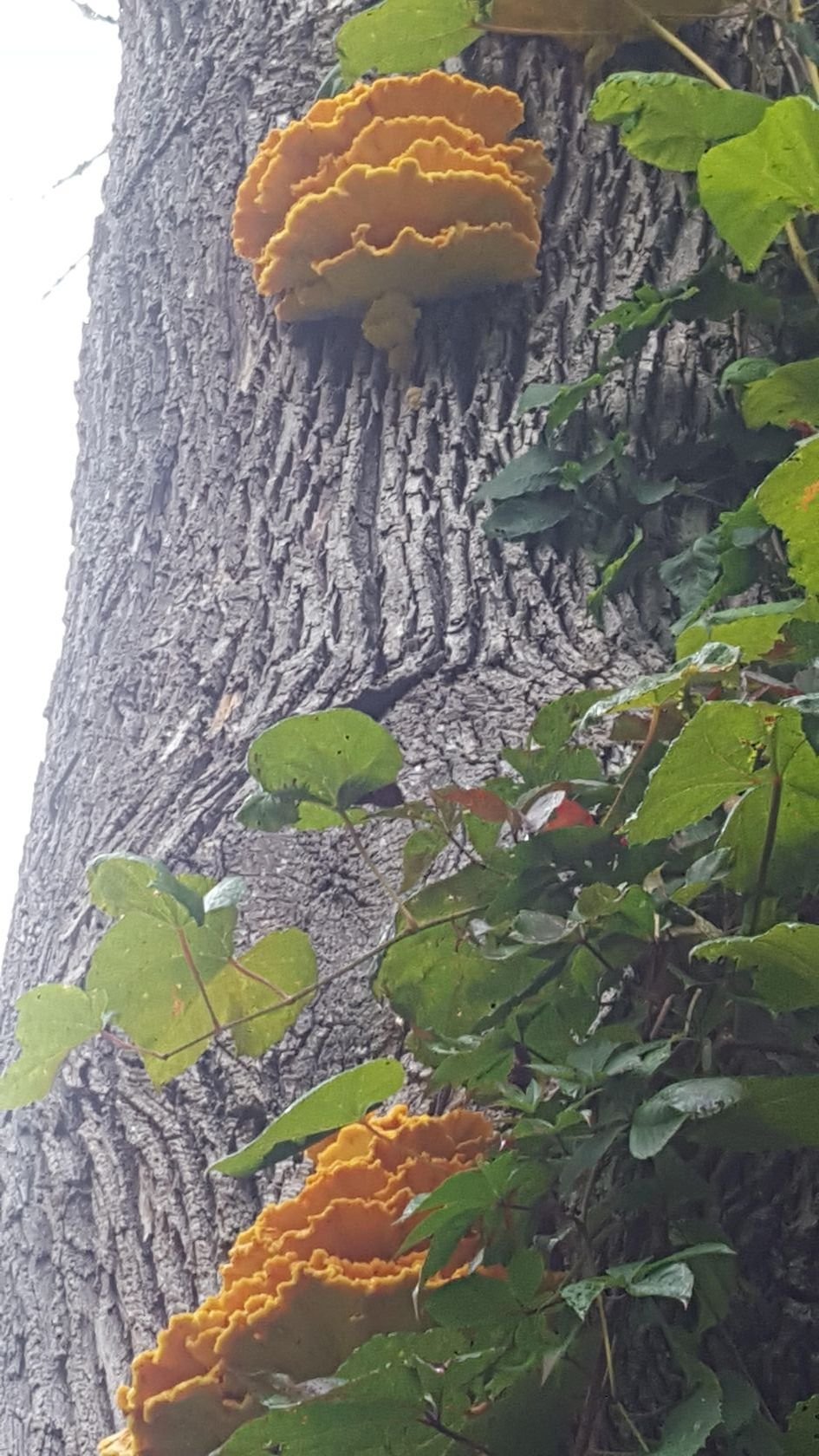
See the difference in the placement of the mushroom body?
The first tree has the mushroom body sprouting from the base of the tree, near the butt or roots. The second tree has the mushroom body sprouting from higher up on the tree. The former is L.cincinnatus, the latter is L.sulphureus - the placement on the tree is a centrally important distinction.
It's all well and good to memorize this distinction between the two species, but it is even better to understand what's happening:
L.sulphureus takes hold above the butt or roots of a tree, and then slowly - sometimes very slowly - the mycelium eats the "heartwood" of the tree. A tree's heartwood is functionally dead, but maintains the structural integrity of the tree. L.sulphureus incubates in the heartwood of the tree for years before a cap is ever seen. By the time you see an L.sulphureus cap, your tree is likely too infested to save. The good news is that the "death sentence" of L.sulphureus can take many more years to kill the tree, although the tree will become less and less structurally sound as the heart wood is slowly eaten.
L.cincinnatus on the other hand is far more insidious. L.cincinnatus grows at the butt of the tree, or along its root system (in that case, it can sometimes look like its growing right out of the ground.). Just like L.sulphureus, it can be several years of growing infection before you ever see a mushroom body sprout. However, unlike L.sulphureus, L.cincinnatus works a hell of a lot faster. This is because the roots of the tree leading into the butt are not passively relied on like the tree's heartwood. The tree actively relies on the roots and butt to take water up from the ground via capillary action, and to remain anchored in the dirt. Therefore, when L.cincinnatus infects a tree, it takes less time for a greater amount of damage to be done - either in the form of reduced foliage or reduced root strength.
Both species will eventually kill the infected trees, or weaken them to the point where they are easily killed by something else. However L.sulphureus acts slowly and L.cincinnatus acts relatively quickly as a result of its preferred growing medium
Although the precise growth medium on the tree is a good distinguishing trait, L.cincinnatus is different in another way as well
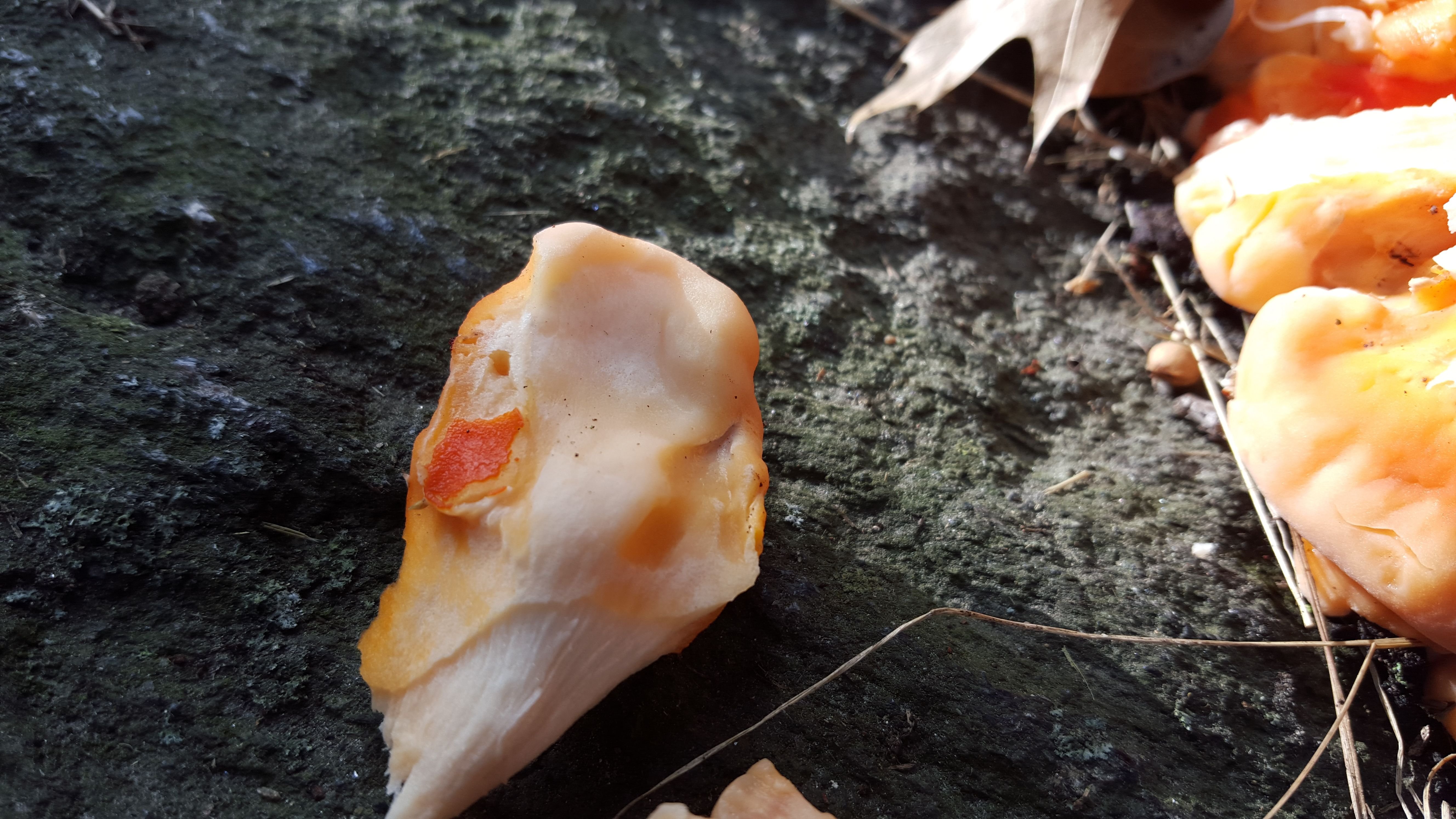
The underside of L.cincinnatus is not the bright yellow of L.sulphureus
It was difficult to isolate a portion of the spore surface with this specimen, as it was still quite young, and incredibly juicy, so the caps had not fully developed. I was only able to find one piece of the cap with a portion of the spore surface developed enough to look at.

But you can see the color is closer to a creamy white than the bright yellow of the L.sulphureus. Take the piece of L.sulphureus to the right from the sample I found a month ago. Look at that bright yellow pore surface!
Once you get past the placement on the tree and the color of the pore surface, the two mushrooms are very much alike.
They can grow to similar sizes, with similar cap colors on top, and with the same white spore print. They both have a delightful mushroomy odor when fresh. When they're very young, both of the mushrooms are super moist. You can literally squeeze water out of them.
No, really, watch me squeeze a couple of drops out of a small piece! Turn up the volume if you want to get the full mushing experience.
As both mushrooms grow, they become harder and woodier.
Eventually the colors blanch in the sun and, after the spores are fully released, the mushroom decomposes into a stanky brown mass. Usually L.cincinnatus will grow in a "floret" or "rosette" pattern, rather than in a shelf pattern like L.sulphureus, but this is really just a question of spawning location - higher up = greater likelyhood of shelf structure.
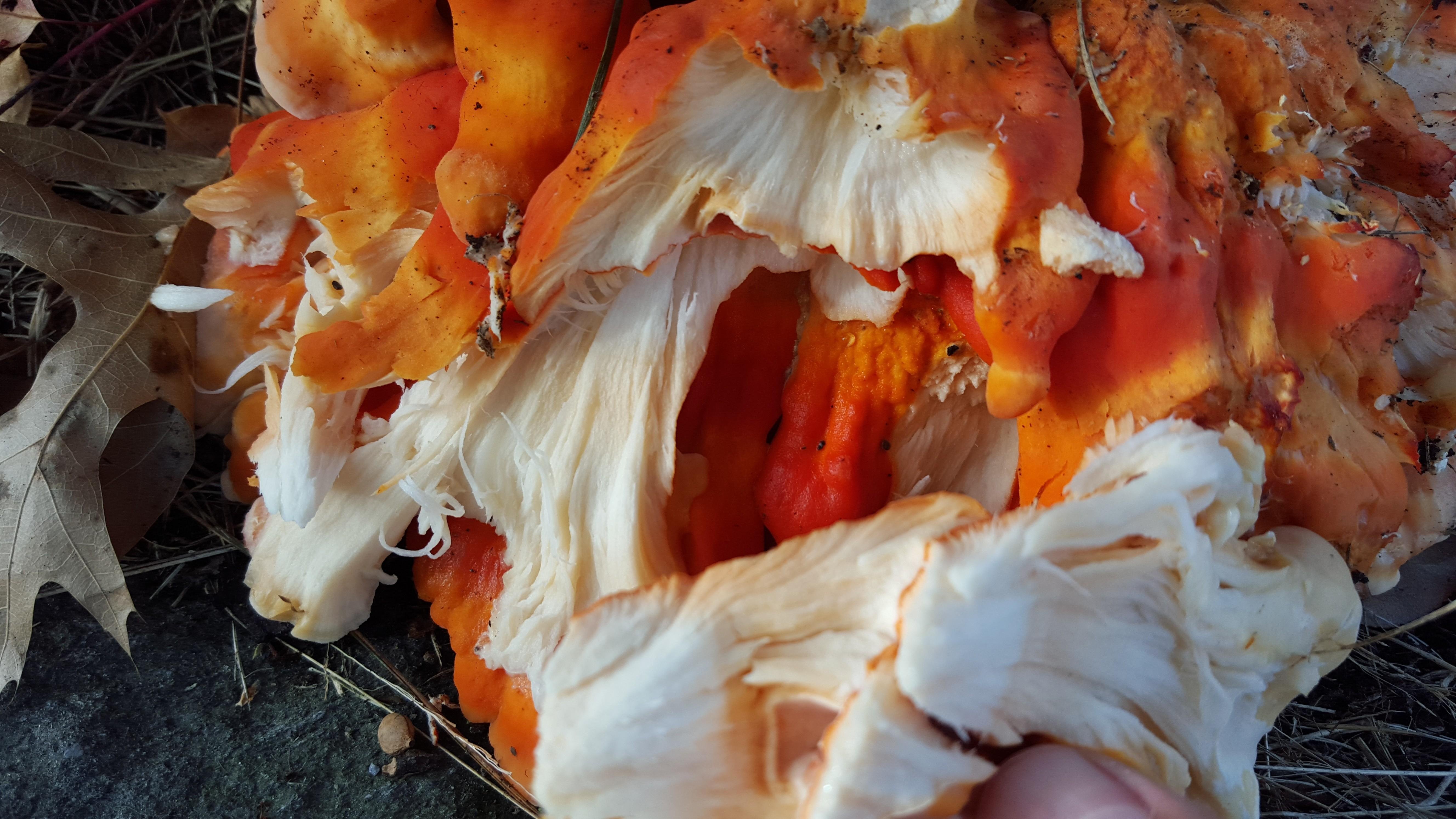
For years, mycologists assumed that both species, L.cincinnatus and L.sulphureus, were the same species of mushroom.
It was only when DNA testing came around that the two mushrooms were proven, clearly, to be two different species. Let's be unequivocal - even though these two mushrooms look identical to the uninformed eye, they CANNOT reproduce with each other! That is what we mean by saying they are two different species - they are genetically different enough that they cannot procreate one with the other.
That makes L.cincinnatus an excellent example of the often discrete, but substantial, differences between many mushrooms that look very similar to one another. Sometime the differences between mushroom species are super obvious - while other times, they can be anything but. However, the distinctions can have very different practical implications. In the case of a homeowner with a sick tree, it can be the difference between another decade of shade and a tree trunk falling into your bedroom window. Who said mushroom knowledge was useless?
MACROSCOPIC CHARACTERISTICS
Cap = Knobby at first and orange with a white border - maturing into a floret or rosette shape - sometimes with layers of orange color, ranging from light to deeper oranges. 5 to 15 cm wide on each cap, 20cm deep according to Kuo - sometimes very thick - as in the case of this find when it was young. Also very moist when young. The whole mushroom can get big - upwards of 60cm across - which is humongous.
Spore surface = White or whitish
Flesh = When young/fresh very tender and lets out a clear juice when cut or squeezed. Strong but delightful fungus odor. When older dries out, becomes brittle and fibrous.
Stem ("stipe") = Not usually much of an obvious stem - but to the extent there is some knobby stem it will usually be near the center of the start of the growth.
Spore Print = White
Ecology ("How it grows.") = Parasitic and Saprobic. Parasitic means it acts like a parasite and leeches resources from another organism, in this case usually dying or sick oak trees. Saprobic means the mushroom is also capable of surviving on dead tissue - in this case dead oak trees. In either case, L.cincinnatus eats the roots of the tree, or the butt wood of the tree near the base. The one pictured here is probably entwined in both.
Distribution = Genetically, in Europe and North Eastern US. Several lookalike species can primarily be differentiated by genetics - but L.huroniensis grows in the Great Lakes region and potentially on conifers - and L.sulphureus grows and feeds higher up on the tree, on the heartwood. A lookalike also exists on the west coast of the US, but is not genetically the same species.
Before I forget - here's a sneak peak! I'm just waiting on the dropper bottles - fingers crossed for a post next week!
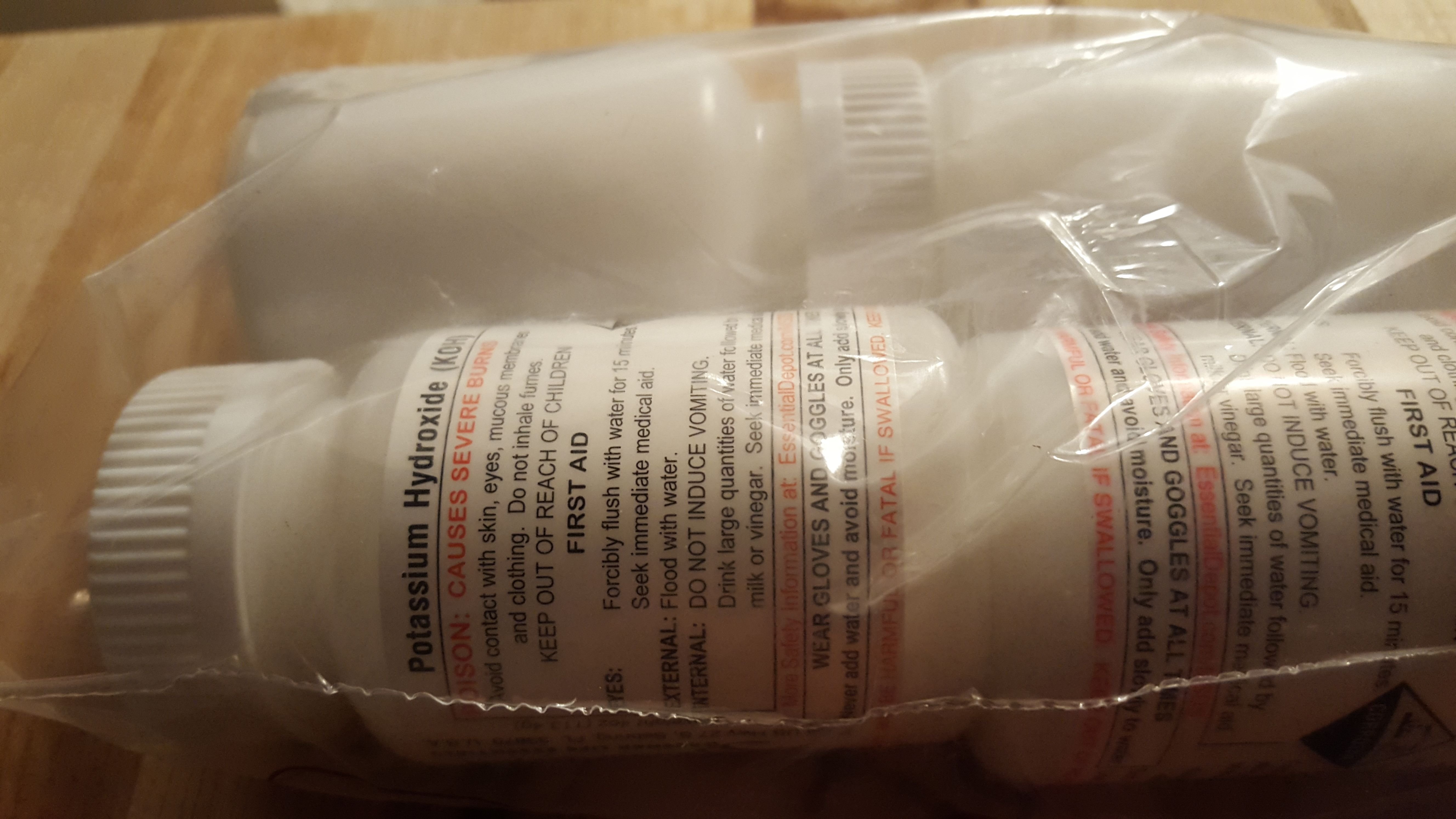
THIS POST IS NOT INTENDED FOR FORAGING PURPOSES AND TO USE IT FOR THOSE PURPOSES WOULD BE DANGEROUS. DO NOT HUNT WILD MUSHROOMS WITHOUT RELYING ON A COMBINATION OF PROFESSIONAL FIELD GUIDES, IN PERSON PROFESSIONAL GUIDANCE, OR IN PERSON GUIDANCE BY SOMEONE TRUSTWORTHY WHO HAS COPIOUS LOCAL, SPECIALIZED MUSHROOM HUNTING EXPERIENCE. FAILURE TO DO SO CAN RESULT IN GRIEVOUS PERSONAL HARM OR DEATH.
Photos Are My Own
Information Sources:
[1]Kuo on L.cincinnatus
[2]Tom Volk on L.cincinnatus
[3]Messiah College
[4]Kuo on L.sulphureus
[5]Iowa State University - Heartwood Rot of Trees
[6]North Carolina State University College of Agriculture and Life Sciences

